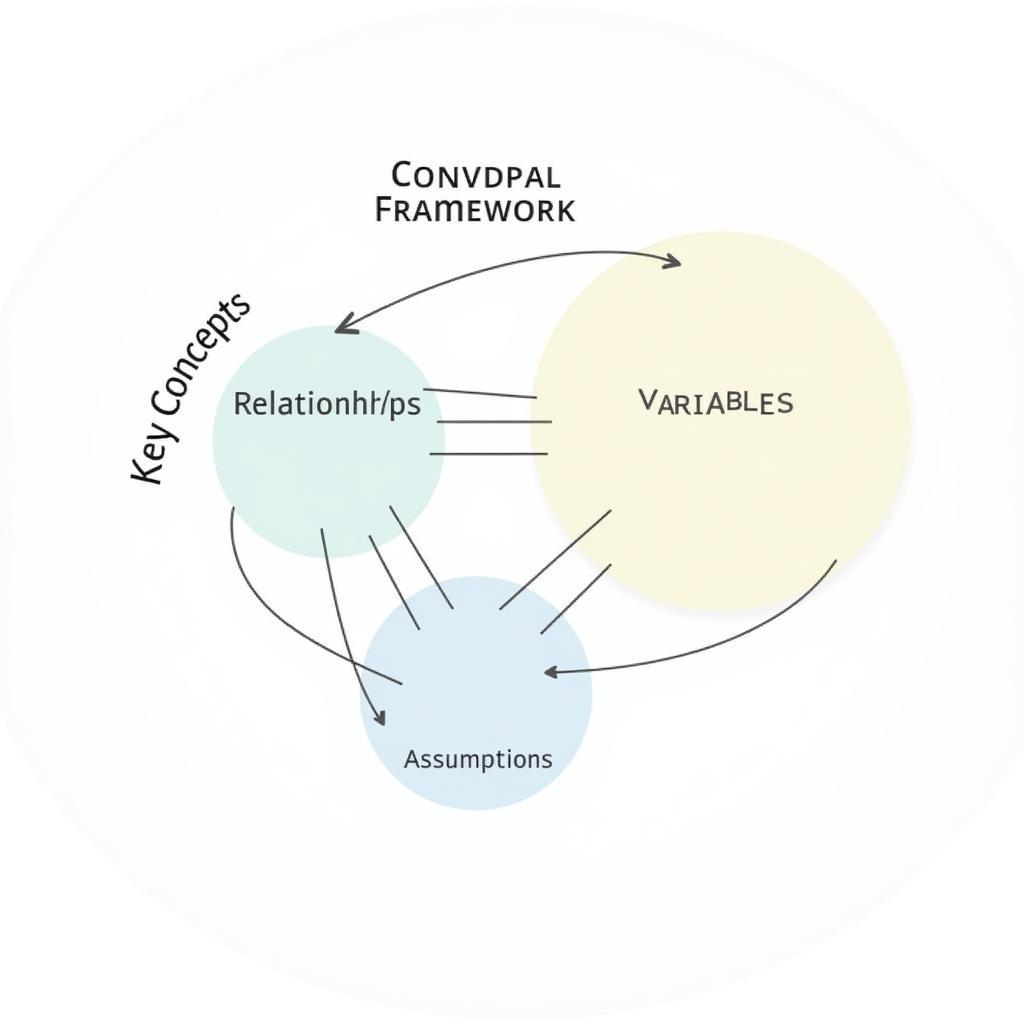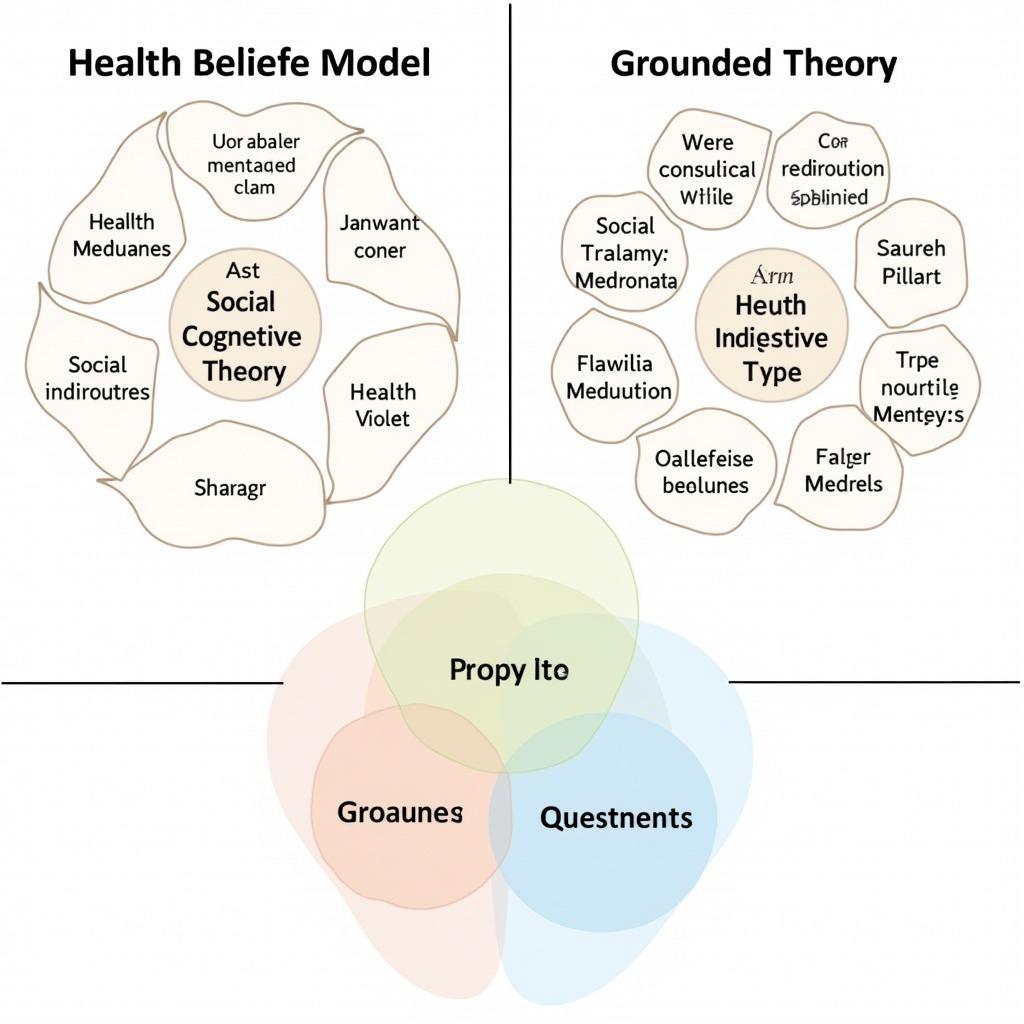A conceptual framework provides the scaffolding for qualitative research, giving shape and structure to your exploration of a phenomenon. It’s the compass guiding your inquiry, ensuring you stay on course as you navigate the complexities of human experience. But what exactly does this framework entail, and how does it function within the realm of qualitative research?
Building Blocks of a Conceptual Framework
Think of a conceptual framework as a blueprint, meticulously crafted from existing theories and concepts related to your research topic. It goes beyond simply defining terms; instead, it weaves together a coherent narrative that explains the relationships between these elements. This narrative serves as the lens through which you’ll interpret your findings, ultimately answering the “why” behind the “what” of your research.
Why is a Conceptual Framework Important?
In the world of qualitative research, where subjectivity reigns supreme, a conceptual framework acts as an anchor, grounding your study in established knowledge. It not only provides a clear direction for your investigation but also enhances the credibility and trustworthiness of your findings.
Here’s how a conceptual framework benefits your qualitative research:
- Focus: It helps narrow down your research question and clarifies the scope of your study, preventing you from veering off into tangential areas.
- Guidance: It provides a roadmap for data collection and analysis, ensuring your efforts are aligned with your research objectives.
- Interpretation: It offers a theoretical lens for making sense of your findings, allowing you to draw meaningful conclusions and contribute to existing knowledge.
- Communication: It provides a shared language for discussing your research with others in your field, fostering clarity and understanding.
Key Elements of a Conceptual Framework
A robust conceptual framework often comprises several key elements:
- Key Concepts: These are the fundamental building blocks of your framework, drawn from existing literature and relevant theories.
- Relationships: Your framework should illustrate the connections between these key concepts, highlighting how they interact and influence each other.
- Variables: Identify the specific factors or characteristics that you will be examining in your research, and explain how they relate to the broader concepts within your framework.
- Assumptions: Clearly state any underlying assumptions that shape your understanding of the phenomenon under investigation.
 Key Elements of a Conceptual Framework
Key Elements of a Conceptual Framework
Conceptual Framework vs. Theoretical Framework: Unveiling the Difference
Often used interchangeably, “conceptual framework” and “theoretical framework” have distinct meanings in qualitative research. While a conceptual framework draws upon broader theoretical ideas, a theoretical framework specifically employs a single, established theory to guide the research.
Think of it this way:
- Theoretical Framework: A pre-existing, fully furnished room in a house (your research topic). You simply move in and arrange your belongings (data) according to the existing structure.
- Conceptual Framework: You’re building a room from scratch, using materials (concepts, theories) you find most relevant to your house’s overall design (research topic).
Developing Your Conceptual Framework: A Step-by-Step Guide
Building a conceptual framework is an iterative process that evolves alongside your research. Here’s a practical guide to get you started:
- Identify Your Research Problem: Clearly articulate the research question you aim to answer.
- Review Existing Literature: Conduct a thorough literature reviewing research to identify relevant theories, concepts, and existing frameworks related to your topic.
- Identify Key Concepts: Based on your literature review, pinpoint the most relevant concepts that directly relate to your research question.
- Establish Relationships: Determine how these concepts are connected and how they interact to explain the phenomenon you are investigating.
- Draw a Visual Representation: Create a diagram or flowchart that visually depicts the relationships between the key concepts in your framework.
Examples of Conceptual Frameworks in Action
Conceptual frameworks are as diverse as the research questions they underpin. Here are a few examples:
- Health Belief Model: This framework explores how individuals’ perceptions of a health threat influence their likelihood of engaging in preventative behaviors.
- Social Cognitive Theory: This framework posits that individuals learn through observation and interaction with their environment.
- Grounded Theory: This approach emphasizes developing a theory that emerges directly from the data collected during the research process.
 Examples of Conceptual Frameworks
Examples of Conceptual Frameworks
Conclusion: A Solid Foundation for Meaningful Insights
A well-defined conceptual framework is an indispensable tool for qualitative researchers. It provides clarity, focus, and a solid foundation for generating meaningful insights. By carefully crafting this framework, you ensure your research is not only methodologically sound but also contributes meaningfully to our understanding of the world around us. Remember, a conceptual framework is not a rigid structure; rather, it’s a flexible guide that evolves alongside your research journey.
Frequently Asked Questions about Conceptual Frameworks in Qualitative Research
1. Do I need a conceptual framework for every qualitative study?
While not mandatory for every study, a conceptual framework is highly recommended for most qualitative research, especially for complex topics. It provides valuable structure and clarity.
2. Can I use multiple theories in my conceptual framework?
Yes, a conceptual framework can draw upon multiple theories and concepts as long as they are relevant to your research question and work together cohesively.
3. Can my conceptual framework change during my research?
Absolutely! As you delve deeper into your research and gather data, you may refine or adapt your conceptual framework to better reflect your evolving understanding of the phenomenon.
4. How detailed does my conceptual framework need to be?
The level of detail will depend on the complexity of your research question and the scope of your study. Aim for clarity and conciseness, ensuring your framework effectively guides your research.
5. What are some common mistakes to avoid when developing a conceptual framework?
Common pitfalls include using a framework that is too broad or too narrow, failing to clearly define key concepts, and not revising the framework as the research progresses.
Need Help with Your Research?
For expert guidance on qualitative research, including developing a robust conceptual framework, our team at Paranormal Research is here to assist you. We offer a range of resources, including:
- Qualitative Research Design Book: Explore in-depth methodologies and best practices in our comprehensive guide. qualitative research design book
- Understanding Positivism Research: Learn about different research paradigms and their implications for your study. what is positivism research
Contact us today for personalized support:
Phone: 0904826292
Email: research@gmail.com
Address: No. 31, Alley 142/7, P. Phú Viên, Bồ Đề, Long Biên, Hà Nội, Việt Nam
Our team of experienced researchers is available 24/7 to answer your questions and provide tailored solutions for your research needs.